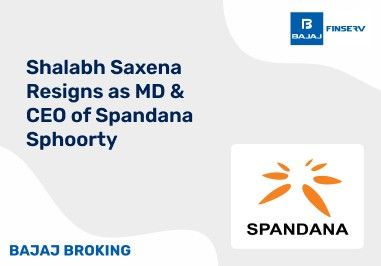BAJAJ BROKING
Tankup Engineers IPO is Open!
Open a Free Demat Account
Trade Now, Pay Later with up to 4x
Track Market Movers Instantly
Income Tax Implications on Demat Account
Introduction
Opening a Demat account is a prerequisite for investing in a wide range of financial securities, including shares, bonds, mutual funds, and more. It’s crucial to be aware that any profits generated from selling securities within your Demat account are subject to taxation. To navigate this aspect of financial planning effectively, it’s essential to understand income tax on demat account according to Tax Act of 1961. Let’s delve into the various facets of taxation that you should keep in mind:
1. Tax on Short-Term Gains:
When you sell shares, debentures, bonds, or mutual funds within one year of acquiring them, any profit earned is categorised as a short-term capital gain. This type of gain is subject to a flat 15% securities transaction tax (STT) under the Income Tax Act. In cases where STT does not apply, your short-term capital gains are combined with your total taxable income, and further tax calculations are based on your applicable income tax slab.
2. Tax on Long-Term Gains:
A capital asset held for more than a year is classified as a long-term capital asset. Profit generated from the sale of such assets is termed as long-term capital gain (LTCG). Similar to the taxation of short-term capital gains, long-term capital gains are also subject to taxation in accordance with Income Tax regulations.
For LTCG exceeding Rs 1 lakh in a financial year, a flat 10% tax applies. However, gains up to this threshold amount remain exempted from taxation.
Also Read: Capital Gain Index
3. Capital Loss:
If you sell your capital assets at a price lower than their purchase cost, you incur a capital loss. Capital assets held for less than 12 months result in a short-term capital loss (STCL). Income Tax laws permit you to offset your short-term capital loss against corresponding capital gains made during the financial year.
Additionally, if the STCL is not utilised in a given year, you have the option to carry it forward for a maximum of 8 financial years. This carried-forward loss can be used to offset either short-term or long-term capital gains made in subsequent years.
On the other hand, long-term capital loss, resulting from selling an asset after holding it for more than a year at a price below its purchase cost, historically could not be set off or carried forward. However, a significant change occurred in February 2018 when an Income Tax notification altered the taxation process.
Since April 1, 2018, investors with a Demat account in India can now set off long-term capital losses against long-term capital gains in the same financial year. Just like STCL, long-term capital losses can also be carried forward for up to 8 years, but they can only be adjusted against corresponding LTCG generated in a specific year.
Exploring Savings With Income Tax On Demat Transactions
If you’re keen on discovering ways to minimise your income tax on demat transactions, two particularly attractive strategies stand out, each designed to significantly reduce your tax burden:
1. Investment in ULIPs (Unit Linked Insurance Plans):
A Unit Linked Insurance Plan (ULIP) stands as a versatile investment vehicle that combines insurance coverage with wealth creation. When you invest in a ULIP, a portion of your funds is allocated to provide you with life insurance coverage, while the remaining portion is channelled into the financial markets. These investments are credited to your demat account, where they are required to be held for a minimum of 5 years due to the mandatory lock-in period.
One of the key advantages of investing in ULIPs is the potential for substantial tax savings. Under Section 80C of the Income Tax Act, investments made in ULIPs up to ₹1.5 lakhs in a financial year are entirely exempt from taxation. Additionally, the maturity proceeds received at the end of the specified holding period are also fully exempt from taxation. This dual tax-saving feature of ULIPs provides an effective means to counteract the impact of income tax on your demat account.
2. Investment in ELSS (Equity Linked Savings Scheme):
Equity Linked Savings Scheme (ELSS) offers another compelling avenue for tax-efficient investment. In comparison to traditional investment instruments, ELSS boasts the shortest lock-in period, which is just 3 years. Furthermore, ELSS typically delivers higher returns when compared to other investment options.
ELSS holds the answer to the question of how to save tax through a demat account. The full amount of investment in this scheme, up to ₹1.5 lakh in a financial year, qualifies for full exemption from taxation. Moreover, any Long-Term Capital Gains (LTCG) generated upon maturity of the ELSS investment, after the 3-year lock-in period, is taxable only if it exceeds ₹1 lakh.
By strategically utilising ULIPs and ELSS investments, you can leverage the tax-saving potential of your demat account to your advantage. These approaches not only offer opportunities for wealth creation but also help in reducing your overall tax liability, allowing you to optimise your financial planning and secure your financial future.
Also Read: Capital Gains Tax
Conclusion
Equipped with this comprehensive understanding of the income tax implications on your Demat account, you can make informed decisions while maximising the benefits of your investment account. For those seeking tax deductions and increased savings, considering investments in Unit Linked Investment Plans (ULIPs) or Equity-Linked Savings Schemes (ELSS) offered by mutual funds is a viable option.
These investment avenues can help you save up to Rs 1.5 lakh in a financial year. While the maturity amount of a ULIP is tax-exempt, long-term capital gains on ELSS funds are subject to taxation only if they surpass the Rs 1 lakh threshold. By carefully considering these tax implications, you can optimise your investment strategy and financial planning to achieve your fiscal goals.
Share this article:
Read More Blogs
Disclaimer :
The information on this website is provided on "AS IS" basis. Bajaj Broking (BFSL) does not warrant the accuracy of the information given herein, either expressly or impliedly, for any particular purpose and expressly disclaims any warranties of merchantability or suitability for any particular purpose. While BFSL strives to ensure accuracy, it does not guarantee the completeness, reliability, or timeliness of the information. Users are advised to independently verify details and stay updated with any changes.
The information provided on this website is for general informational purposes only and is subject to change without prior notice. BFSL shall not be responsible for any consequences arising from reliance on the information provided herein and shall not be held responsible for all or any actions that may subsequently result in any loss, damage and or liability. Interest rates, fees, and charges etc., are revised from time to time, for the latest details please refer to our Pricing page.
Neither the information, nor any opinion contained in this website constitutes a solicitation or offer by BFSL or its affiliates to buy or sell any securities, futures, options or other financial instruments or provide any investment advice or service.
BFSL is acting as distributor for non-broking products/ services such as IPO, Mutual Fund, Insurance, PMS, and NPS. These are not Exchange Traded Products. For more details on risk factors, terms and conditions please read the sales brochure carefully before investing.
Investments in the securities market are subject to market risk, read all related documents carefully before investing. This content is for educational purposes only. Securities quoted are exemplary and not recommendatory.
For more disclaimer, check here : https://www.bajajbroking.in/disclaimer
Our Secure Trading Platforms
Level up your stock market experience: Download the Bajaj Broking App for effortless investing and trading













